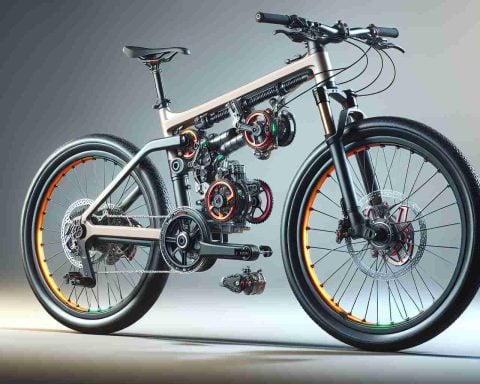The recent launch of Minnesota’s e-bike rebate program may have hit a few speed bumps, but there’s no denying the immense potential and benefits of these electric-powered bikes. While the initial surge of applicants overwhelmed the system, causing a temporary shutdown, it’s only a matter of time before the program picks up speed and becomes a resounding success.
Approved by the Minnesota Legislature, the e-bike rebate program sets aside $2 million each for 2024 and 2025. Eligible applicants can receive a rebate covering 50-75% of the total cost of an e-bike and safety accessories, with a maximum cap of $1,500 per person. With such significant discounts available, it’s no wonder that e-bikes have the potential to revolutionize the way we commute and travel.
E-bikes offer an affordable alternative to conventional bicycles and even cars, with prices ranging from $600 to $2,500. For example, if you purchase a $1,500 e-bike and meet the income criteria, you could receive a rebate of 63%, bringing down the cost of the bike to just $555. With savings like these, traditional bicycles may struggle to compete.
The primary aim of the e-bike program is to encourage individuals to leave their cars behind and opt for a greener, healthier mode of transportation. By increasing bicycle usage, we can reduce traffic congestion, lower greenhouse gas emissions, and potentially minimize the need for parking infrastructure.
Once the program gains momentum, it will be fascinating to explore the demographics of e-bike buyers and their preferred usage patterns. While young professionals may show interest, existing national studies indicate that the majority of new e-bike owners in Minnesota will likely be aged 55 and above. Although some individuals may commute on their e-bikes, recreational riding is expected to be more prevalent.
However, as e-bike popularity continues to soar, an important concern arises – safety. While e-bikes offer an exhilarating and convenient mode of transport, the surge in sales also leads to an increase in accidents. Many first-time e-bike riders lack experience with motorized vehicles and may not receive any special training or licensing before riding. With top speeds reaching 28 mph, caution is crucial.
As e-bikes become more prevalent on our roads, it is essential to highlight the importance of safety measures and education. Initiatives that promote responsible riding, such as safety courses and awareness campaigns, can greatly reduce the risk of accidents and promote a positive e-bike culture.
While we eagerly anticipate the continuation of Minnesota’s e-bike rebate program, it is vital not to overlook the significance of safety practices. By navigating the future with precautions in mind, we can fully embrace the benefits of e-bikes and create a safer and sustainable landscape for all cyclists. So, let’s tap the brakes and embark on this journey towards a safer and greener future.
The e-bike industry is experiencing significant growth globally. According to a report by Market Research Future, the global e-bike market is expected to reach a value of $38.6 billion by 2025, growing at a compound annual growth rate (CAGR) of 9.01% during the forecast period from 2019 to 2025. This growth can be attributed to factors such as increasing concerns about the environment, traffic congestion, and rising fuel prices.
In the United States, the e-bike market is also witnessing a surge in demand. According to a report by Navigant Research, e-bike sales in the U.S. are expected to reach approximately 6.9 million units by 2023, representing a CAGR of 24.5% from 2019 to 2023. The increasing popularity of e-bikes can be attributed to their affordability, convenience, and the growing trend towards sustainable transportation options.
One of the main challenges facing the e-bike industry is the lack of infrastructure to support e-bike usage. While traditional bicycles can easily be used on existing bicycle lanes and paths, e-bikes often fall into a regulatory gray area and may not be allowed on certain trails or paths designated for non-motorized vehicles. This issue has led to debates and discussions among policymakers to determine appropriate laws and regulations regarding e-bike usage.
Another challenge for the e-bike industry is the issue of battery disposal and recycling. E-bike batteries contain hazardous materials that need to be properly disposed of or recycled at the end of their life cycle. The increasing popularity of e-bikes means that there will be a significant increase in battery waste in the coming years. Finding sustainable and environmentally friendly solutions for battery disposal and recycling is crucial for the long-term sustainability of the industry.
Moreover, there is a need for continued research and development to improve the performance, range, and affordability of e-bikes. Innovations in battery technology, lightweight materials, and motor efficiency can further enhance the user experience and make e-bikes more accessible to a wider range of consumers.
To learn more about the e-bike industry, you can visit Electric Bike or Electric Bike Report. These websites provide valuable insights, news, and reviews related to e-bikes, including market trends, new product releases, and industry updates.























